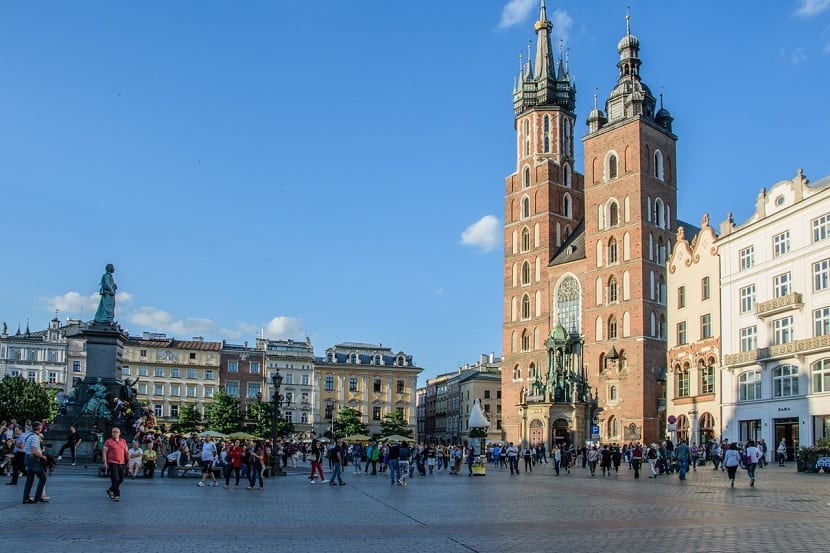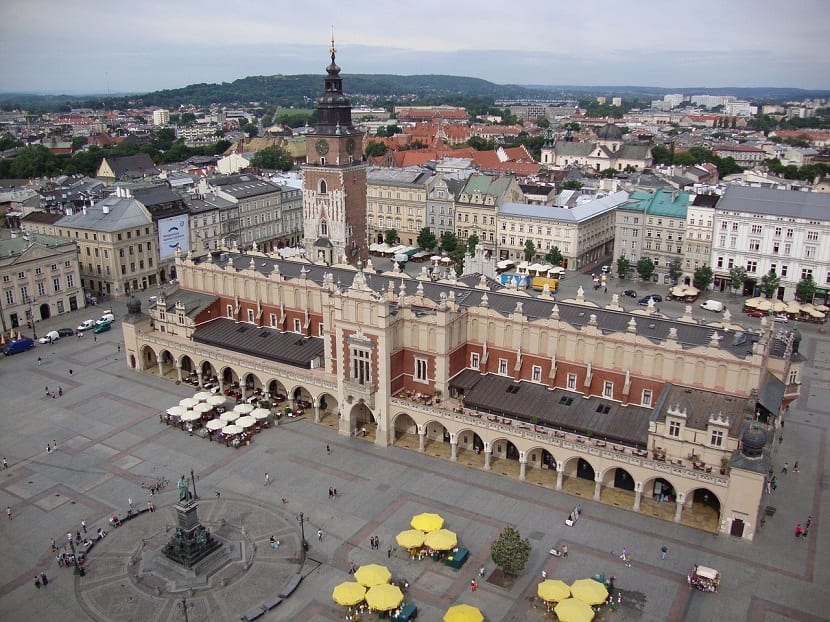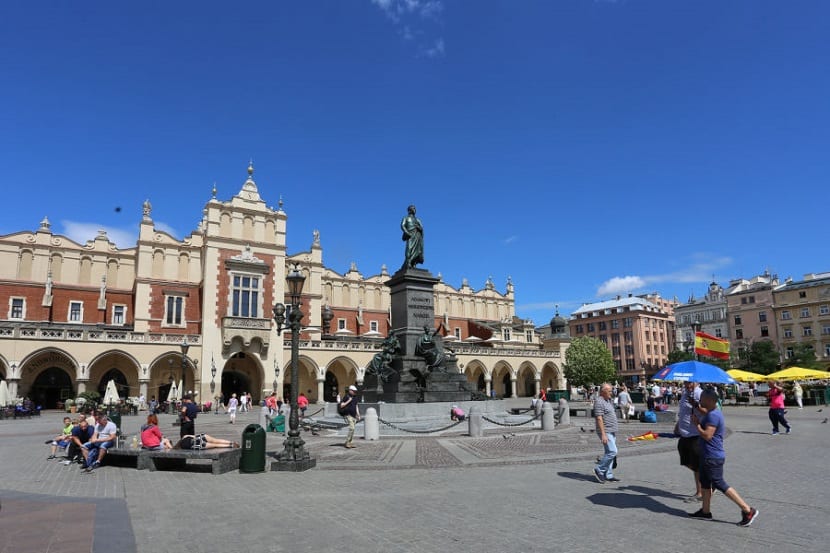
Image | Pixabay
Krakow's Market Square is the largest medieval square in all of Europe with its 40.000 m2 and the point of greatest tourist interest in the city.
It draws attention not only for its size and for the presence of important historical buildings but also for how lively and touristy it is, since both tourists and locals gather there to enjoy a walk or a coffee on some of its terraces. .
It is not surprising, therefore, that Krakow's Main Market Square is considered by many travelers to be the most beautiful in the world. Next, we visit this place to learn what it is that has made it worthy of such honor.
History of the Plaza
It was in the year 1254 when the Krakow Square began to be built to accommodate a large market, the heart of the social and commercial activity of the city. Soon, around it the wealthiest families in Krakow began to build their houses, thanks to which today we can enjoy incredibly beautiful buildings.
Other very important public buildings that adorn the Krakow square are the Cloth Hall, the Town Hall Tower, the Basilica of Santa Maria and the Church of San Adalbert.
This UNESCO World Heritage-listed square has been the scene of many happy and tragic scenes in Poland. Times have changed but today it is still one of the most beloved corners of Krakow.
In its surroundings you can find some of the best restaurants and entertainment venues in the city.

Image | Pixabay
What to see in the Market Square?
The Market Square has an important historical, cultural and social significance. Surrounded by palaces of medieval origin and bourgeois houses, the square is the main meeting point for the inhabitants of Krakow.
Cloth Hall
It is the emblem of the Market Square and the most photographed site. It is a Renaissance palace that originally attracted merchants to do business.
Construction began in 1257, at the same time that the square that houses it was started and for many people it is considered the first shopping center in history.
In 1555 it suffered a great fire that destroyed the Cloth Hall but it was rebuilt in the Renaissance style by the prestigious Italian architect Giovani il Mosca de Padua.
Today its facilities are used for cultural purposes. The first floor is a section of the National Museum in Krakow and in the basement is the Museum under the Krakow Rynek.
In it you can see traces of settlements before the construction of the square and many objects from the medieval market. On the other hand, inside the Cloth Hall you can also visit the Gallery of Polish Art from the XNUMXth century.
As a curiosity, to say that the Cloth Hall receives this name because at the beginning of the square, merchants set up stalls for the sale of cloth and from there arose the "cloth market".
Basilica of Santa María
St. Mary's Basilica is one of the most important monuments in Krakow. Gothic in style, it was built at the end of the XNUMXth century and has an imposing façade flanked by towers of different heights.
In the highest tower there is a golden crown that recalls that in the origins of the basilica, a trumpeter warned the population from above about any threat such as fires or invasions.
At present, this tradition continues in force since every hour a trumpeter plays the Hejna? mariacki, a traditional melody that gives its name to the tallest tower.
Tower of the old Town Hall
This 70-meter high tower is the only remaining vestige of the old Krakow City Hall, which was demolished in 1820. The tower was built at the end of the XNUMXth century and today it functions as a viewing platform and as part of the Krakow Museum of History.
Church of San Adalberto
It is not as well known as the Basilica of Santa María but it is older. Its construction dates back to the beginning of the Middle Ages. It was very popular with merchants who came to Krakow's Market Square to do business.

Image | Magiczny Kraków
Monument to Adam Mickiewicz
It is a monument in honor of the Polish romantic poet that was inaugurated in June 1898 to mark the centenary of his birth. During the Nazi occupation it was destroyed but later the Polish government rebuilt it again, being one of the main tourist attractions for Krakow.